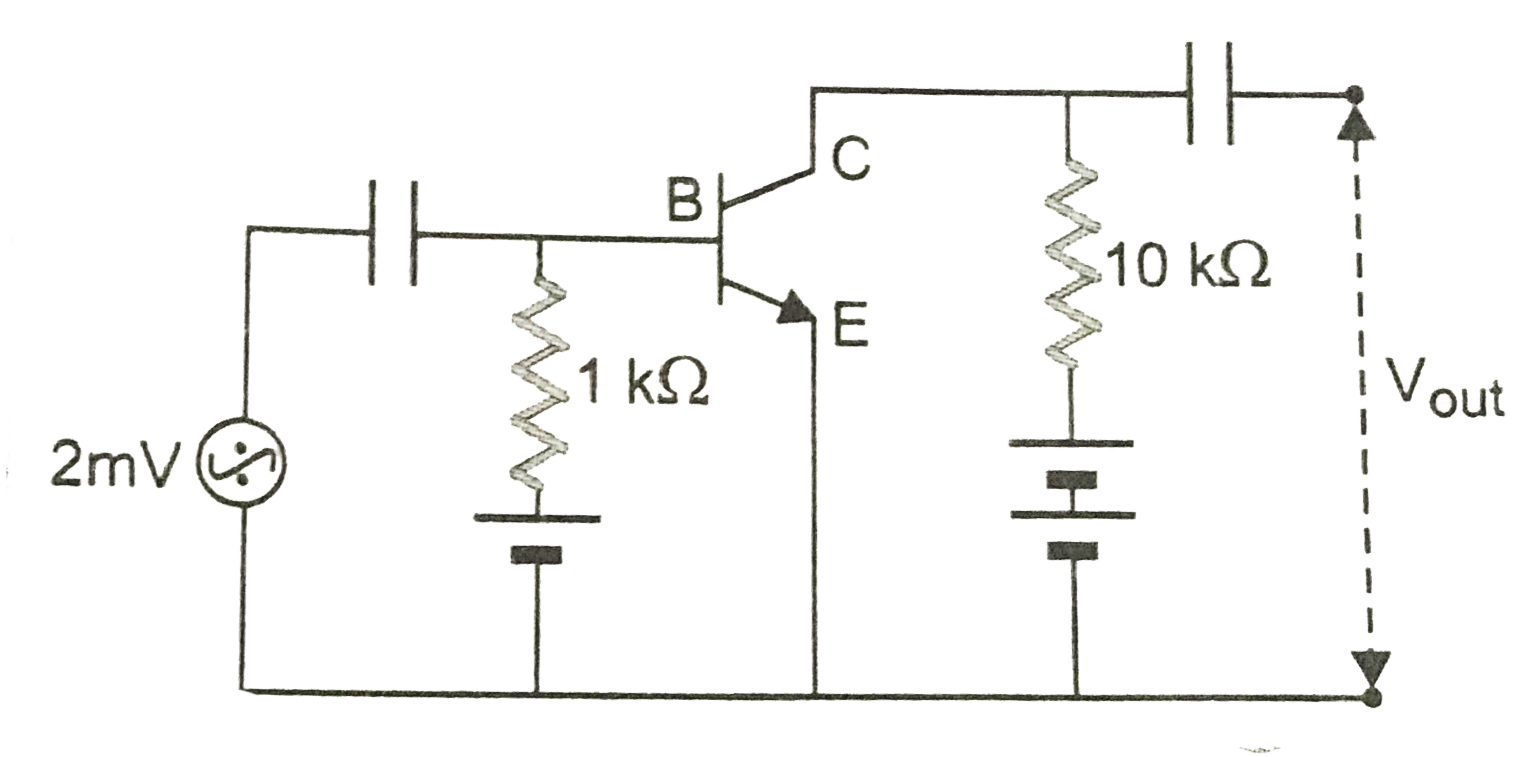In a common emitter (CE) amplifier having a voltage gain G, the transistor used has transconductor 0.03 mho and current gain 25. If the above transistor is replaced with another one with transconductance 0.02 mho and current gain 20, the voltage gain will
23G
1.5G
13G
54G
The correct Answer is:A
To solve the problem, we need to determine the voltage gain of the second transistor in a common emitter amplifier configuration. We will use the relationship between transconductance (g) and voltage gain (G) for the two transistors.
1. Understand the Voltage Gain Formula:
The voltage gain (G) of a common emitter amplifier can be expressed as:
G=gm⋅RC
where gm is the transconductance and RC is the collector resistance.
2. Identify Given Values for the First Transistor:
For the first transistor:
- Transconductance, gm1=0.03mho
- Current gain, β1=25
- Voltage gain, G1=G
3. Identify Given Values for the Second Transistor:
For the second transistor:
- Transconductance, gm2=0.02mho
- Current gain, β2=20
4. Relate the Voltage Gains of the Two Transistors:
Since the collector resistance RC remains the same for both transistors, we can write:
G1G2=gm1gm2
Substituting the known values:
GG2=0.030.02
5. Calculate the Ratio:
GG2=32
This implies:
G2=23G
6. Conclusion:
The voltage gain of the second transistor G2 is:
G2=23G
Final Answer:
The voltage gain of the second transistor is 23G.
The voltage gain (G) of a common emitter amplifier can be expressed as:
G=gm⋅RC
where gm is the transconductance and RC is the collector resistance.
For the first transistor:
- Transconductance, gm1=0.03mho
- Current gain, β1=25
- Voltage gain, G1=G
For the second transistor:
- Transconductance, gm2=0.02mho
- Current gain, β2=20
Since the collector resistance RC remains the same for both transistors, we can write:
G1G2=gm1gm2
Substituting the known values:
GG2=0.030.02
GG2=32
This implies:
G2=23G
The voltage gain of the second transistor G2 is:
G2=23G
The voltage gain of the second transistor is 23G.
Topper's Solved these Questions
Similar Questions
Knowledge Check
In a common emitter (CE) amplifier having a voltage gain G, the transistor used has transconductor 0.03 mho and current gain 25. If the above transistor is replaced with another one with transconductance 0.02 mho and current gain 20, the voltage gain will
A13GB54GC23GD1.5GIn a common emitter (CE) amplifier having a voltage gain G, the transistor used has transconductor 0.03 mho and current gain 25. If the above transistor is replaced with another one with transconductance 0.02 mho and current gain 20, the voltage gain will
A1.5GB13GC54GD23GIn a common emitter (CE) amplifier having a voltage gain G, the transistor used has transconductance 0.03 mho and current gain 25. If the above transistor is replaced with another one with transconductance 0.02 mho and current gain 20, the voltage gain will be
A23GB1.5GC13GD54G
What is the current gain for a transistor used as a common emitter amplifier, if the current gain of the same transistor used in common base mode is 0.95 ?
View SolutionA common emiiter amplifier has voltage gain 50 and current gain is 25. The power gain of the amplifier is:
View SolutionIn common emitter transistor, the input resistance is 200Ω and bad resistance is 40kΩ. If current gain is 80 then voltage gain is
View SolutionIn the common emitter amplifier circuit, Fig. an npn transistor with output voltage of the amplifier as 1 V, the current gain of transistor amplifier is :

View SolutionA common emitter transistor amplifier has a current gain of 50. If the load resistance is 4kΩ, and input resistance is 500Ω, the voltage gain of amplifier is.
View Solution
